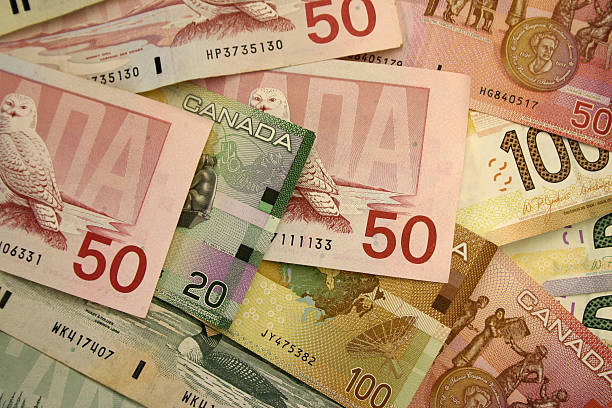
USD/CAD rises over 1% after Trump's 25% tariffs on Canadian imports, set to take effect on Tuesday.
The US imposed a 25% tariff on Mexican goods and a 10% duty on Chinese exports.
The pair appreciates due to the interest rate differential between the BoC and the Fed.
The USD/CAD pair gains strength for the sixth consecutive day, trading around 1.4710 during the early European hours on Monday. The pair has risen by over 1% following US President Donald Trump's 25% import tariff on Canada. Additionally, Canadian energy exports will face a 10% tariff, according to Reuters.
The US also imposed 25% tariffs on Mexican goods on Saturday, while Chinese exports will face a 10% tariff. These tariffs are set to begin on Tuesday and will remain in place until the fentanyl overdose crisis is resolved. In response, Canada, Mexico, and China have promised to retaliate against the extensive trade restrictions. China's foreign ministry warned that the tariffs would inevitably affect future cooperation on drug control, per Reuters.
The US Dollar Index (DXY), which measures the value of the US Dollar against six major currencies, rises for the fifth consecutive day and is trading around 109.50 at the time of writing. The ISM Manufacturing PMI for January will be closely watched during the North American session.
US Treasury Secretary Scott Bessent warned Key Square Capital Management partners a year ago that “tariffs are inflationary and would strengthen the US Dollar—hardly a good starting point for a US industrial renaissance.” However, according to the Financial Times (FT), Bessent last week supported new universal tariffs on US imports, proposing an initial 2.5% rate that would gradually increase.
The USD/CAD pair appreciates due to the interest rate differential between the Bank of Canada (BoC) and the US Federal Reserve (Fed). Last week, the BoC reduced its key interest rate by 25 bps to 3.0% and ended its quantitative tightening program, indicating plans to resume asset purchases in early March. Meanwhile, the Fed has chosen to keep its interest rates unchanged.
Canadian Dollar FAQs
The key factors driving the Canadian Dollar (CAD) are the level of interest rates set by the Bank of Canada (BoC), the price of Oil, Canada’s largest export, the health of its economy, inflation and the Trade Balance, which is the difference between the value of Canada’s exports versus its imports. Other factors include market sentiment – whether investors are taking on more risky assets (risk-on) or seeking safe-havens (risk-off) – with risk-on being CAD-positive. As its largest trading partner, the health of the US economy is also a key factor influencing the Canadian Dollar.
The Bank of Canada (BoC) has a significant influence on the Canadian Dollar by setting the level of interest rates that banks can lend to one another. This influences the level of interest rates for everyone. The main goal of the BoC is to maintain inflation at 1-3% by adjusting interest rates up or down. Relatively higher interest rates tend to be positive for the CAD. The Bank of Canada can also use quantitative easing and tightening to influence credit conditions, with the former CAD-negative and the latter CAD-positive.
The price of Oil is a key factor impacting the value of the Canadian Dollar. Petroleum is Canada’s biggest export, so Oil price tends to have an immediate impact on the CAD value. Generally, if Oil price rises CAD also goes up, as aggregate demand for the currency increases. The opposite is the case if the price of Oil falls. Higher Oil prices also tend to result in a greater likelihood of a positive Trade Balance, which is also supportive of the CAD.
While inflation had always traditionally been thought of as a negative factor for a currency since it lowers the value of money, the opposite has actually been the case in modern times with the relaxation of cross-border capital controls. Higher inflation tends to lead central banks to put up interest rates which attracts more capital inflows from global investors seeking a lucrative place to keep their money. This increases demand for the local currency, which in Canada’s case is the Canadian Dollar.
Macroeconomic data releases gauge the health of the economy and can have an impact on the Canadian Dollar. Indicators such as GDP, Manufacturing and Services PMIs, employment, and consumer sentiment surveys can all influence the direction of the CAD. A strong economy is good for the Canadian Dollar. Not only does it attract more foreign investment but it may encourage the Bank of Canada to put up interest rates, leading to a stronger currency. If economic data is weak, however, the CAD is likely to fall.
* The content presented above, whether from a third party or not, is considered as general advice only. This article should not be construed as containing investment advice, investment recommendations, an offer of or solicitation for any transactions in financial instruments.

